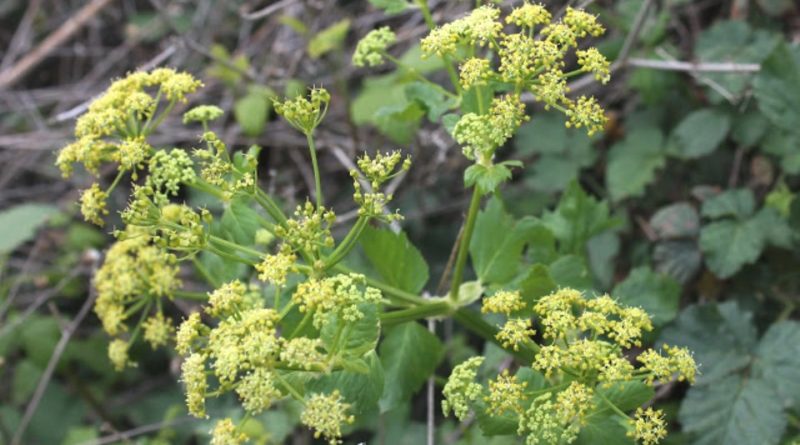Kundmannia sicula
Kundmannia sicula
Kundmannia (Kundmannia sicula (L.) DC.) Is a herbaceous species belonging to the Apiaceae family.
Systematic –
From a systematic point of view, it belongs to the Eukaryota Domain, Plantae Kingdom, Magnoliophyta Division, Magnoliopsida Class, Apiales Order, Apiaceae Family and therefore to the Kundmannia Genus and the K. Sicula Species.
The terms are synonymous:
– Brignolia pastinacifolia Bertol .;
– Sium siculum L .;
Etymology –
The term Kundmannia was dedicated to the physician and botanist J.Chr. Kundmann (1684-1751).
The specific Sicilian epithet comes from the presence of this plant mainly in the Mediterranean and especially in Sicily.
Geographical Distribution and Habitat –
Kundmannia is a typically Mediterranean species with a distribution area similar to that of the olive tree with a typical habitat of uncultivated meadows, pastures, paths, loose soils, where it grows between 0 and 1400 m above sea level.
Description –
The Kundmannia sicula is an aromatic, perennial plant, of the size of 30-70, up to a maximum of 100 cm, glabrous, of an intense green color.
The stem is flexuous, erect or ascending.
The basal leaves are pinnate seven and the upper two-pinnate, with oval or oblong segments with serrated edge.
The flowers are small with cylindrical calyx and yellow petals, carried by umbels with 6-16 or more unequal rays. Casing with several linear bracts.
The antesis is between May and June.
The fruit is an oblong-cylindrical, hairless polyachanium of 6-10 x 1-1.5 mm, with thin but prominent primary ribs, numerous vittas (tubes or secretory channels), arranged irregularly.
Seeds with concave endosperm in the commissural face.
Cultivation –
Kundmannia is a spontaneous and typical plant of the Mediterranean area that could be usefully cultivated, starting from seed, to increase the biodiversity of agricultural areas and to obtain a useful integration with essences for food use.
Uses and Traditions –
Kundmannia sicula is mainly used in the south (Campania and Sicily) where the leaves are used to flavor the mixed salads. In Campania they are used to collect the leaves to use them as a characterizing ingredient of the renowned soup, the so-called “maritata soup”, a traditional dish prepared locally for the Christmas and Easter holidays.
The food use of this plant has also been known for some time in Sicily where this essence is called “pitrusinu sirvaggiu” (wild parsley).
The plant contains several essential oils.
The used parts of Kundmannia are the leaves and the harvesting period is from December to April.
Preparation method –
The leaves of this plant are used, like parsley, as an aroma in the preparation of herbal soups or for various condiments.
Guido Bissanti
Sources
– Acta Plantarum – Flora of the Italian Regions.
– Wikipedia, the free encyclopedia.
– Treben M., 2000. Health from the Lord’s Pharmacy, Tips and experiences with medicinal herbs, Ennsthaler Editore
– Pignatti S., 1982. Flora of Italy, Edagricole, Bologna.
– Conti F., Abbate G., Alessandrini A., Blasi C. (edited by), 2005. An annotated checklist of the Italian vascular flora, Palombi Editore.
Warning: Pharmaceutical applications and alimurgical uses are indicated for information purposes only, they do not in any way represent a medical prescription; therefore, no responsibility is accepted for their use for healing, aesthetic or food purposes.


